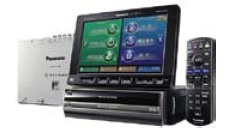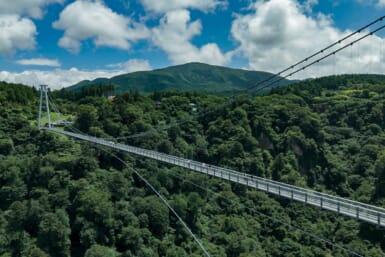The best of the English car navi class
by Robert Estel
For those who are lucky enough to afford a car in Japan, there are many pleasures to be found with the freedom to go anywhere. Unfortunately, those who have the pleasure of driving around inner-city Tokyo know that it’s a sprawling, narrow mess of roads. Japanese addresses are also not very easy to follow, which makes you wonder how packages get delivered at times. The secret? Car navigation units or car navi as the Japanese so affectionately like to call them.
Most cars these days come with car navigation units installed (for an aditional price, of course) but those without one installed yet need look no further than Panasonic’s latest offering. Panasonic has launched their new F Class Car Navigation unit this summer that wraps up everything but the kitchen sink in it. While most people think car navigation is simply inputting an address and following the instructions, this high-end system does that and more. The specifics of the F Class include a seven-inch VGA touch screen, available in retractable, built in, or separate monitor styles, an integrated hard drive, television tuner, SD slot, iPod interaction, DVD/CD/MD interfacing, and boosted antenna strength.
In particular, the biggest selling point of the new F Class is the increased antenna strength, which is done through the use of four separate tuners and antenna in the car. This allows for increased sensitivity when receiving digital television and less loss of image while moving. F Class uses 12 segments of digital broadcasting, which allows it to have better reception in most areas, whereas by comparison, cellular phones only use one segment, thus their small area of usage. With the use of extra tuners, antennas, and the increased sensitivity, Panasonic claims clear, stable reception up to speeds of 150 km/h. For those who drive that fast, however, we would recommend you not watch television.
Another selling point is the use of a system called Odekake Strada. This new system will allow you to input your course or destination at home or over the internet, and download that information to an SD card. Once you insert the SD card into the navi, you are set to go without having to spend time inputting the destination in your vehicle. Panasonic is planning on further future interfacing by allowing you to access Odekake Strada from your cell phone and then transfer the destination information via infrared. This system is expected to be available this summer.
Lastly, compared to previous models, size has also been reduced by 38 percent, meaning the system can be easily installed under the front seat of your vehicle rather than taking up valuable trunk space. In the long run however, all that technology does not come cheap as the retractable LCD Monitor version will set you back ¥354,900, roughly a third of the cost of a new compact car. More information can be found at panasonic.jp/car/navi/products/index.html (Japanese only).









